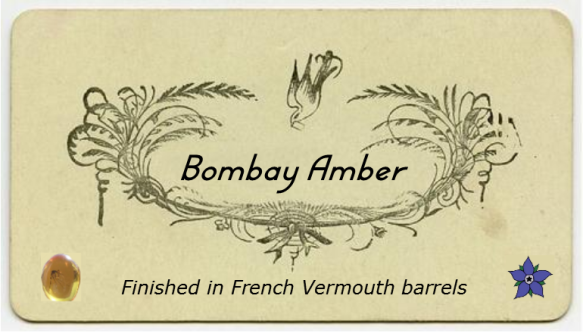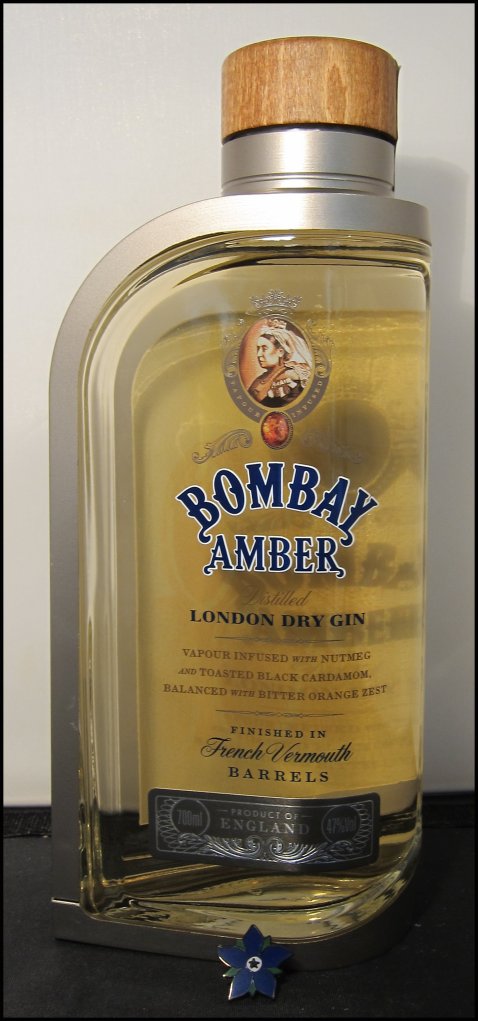Cocktails with… Bombay Amber – Gin finished in French vermouth Barrels
Contributed by on Apr 17, 2014
Zero readers love this post.
Today, we are reviewing something exceptionally exciting: Bombay Amber, Bombay Spirits first foray into aged spirits. For my upcoming book, “Forgotten Spirits & Long-lost Liqueurs”, I’ve been writing a lot on aged or yellow gin, so I was very excited to learn that another large brand is bringing out a spirit in this long-lost sub-category.
Bombay Amber follows the release of the high-end Burrough’s Reserve from Beefeater, which retails at around £70 a bottle and, as such, the focus tends to be on sipping the spirit neat. Now, I am a fan of Beefeater’s offering, but it is a shame that the price is a little inaccessible and it hasn’t reignited the interest in yellow gin cocktails that once existed.
Bombay Amber (47.0%ABV) is made using the classic 8 botanical mix of Bombay Dry (click here): juniper, coriander, angelica, lemon, orris, liquorice and almond. To this original mix, they add black cardamom, nutmeg and bitter orange. The gin is then distilled using vapour infusion.
After distillation, the gin is finished in French vermouth barrels. My educated guess would be that these were Noilly Prat barrels, as Noilly Prat is both French, aged in wood, and owned by Bacardi-Martini, the parent company of Bombay Sapphire.
The Taste
1) On its own
i) At room temperature
Colour: Straw gold
Nose: Reminds me of a Martini: there are the dry, juniper elements from the gin, but there’s also a slightly sweet spiciness and herbal note, as well as a hint of oxidised citrus, reminiscent of a white vermouth.
Taste: Smooth, but with a strong flavour: the additional herbal and spiced notes come through, along with a touch of pepper/menthol from the black cardamom, so, although this is not made using the peppers found in Bombay Sapphire (cubeb berries and Grains of Paradise), a similar character remains. There is then some jammy, zesty flavours from the orange, followed by a more plump, herbal impression with juniper, coriander, and then some woody notes. It is amazing just how much of the character of the vermouth seems to come through in the spirit, but it gives the gin a great complexity that is there all the way through to the finish.
ii) From the refrigerator
Nose: Sour cherry and zesty orange, as well as some dry, tangy notes.
Taste: In my opinion, a light chill isn’t the best way to enjoy this spirit: you miss out on the best world of the spirit at room temperature and from the freezer. Interestingly, the bitter notes seem to be more concentrated and it tastes much dryer, although there is still a hint of a marmalade-like sweetness. I think that some people would really like this serve, but, for me, I prefer the other two.
iii) From the freezer
Nose: Pine sap, orange and sauterne.
Taste: Some of the fruity and citrus flavours that you would expect from a sauterne wine come through, along with a sweetness and fragrant, zesty orange, too. This is followed by a dry portion of juniper and angelica, then some bitter, earthy notes with liquorice root, some menthol, salt and wormwood. The low temperature seems to concentrate the contrast between the sweet and bitter notes, as well as provide a silky mouthfeel. This is an usual spirit that is both engaging and takes a little time to fully appreciate. If it had been served to me in a Martini glass, I may have mistaken it for a medium-dry Martini.
2) Gin & Tonic
This makes a dry Gin & Tonic that doesn’t have the overbearing sweet spice and oak that you usually get when mixing an aged gin with tonic water. There are quite a lot of herbal notes and a dry, woody bitterness at the end, which is not just from the quinine, but reminds me of wormwood, too. This may just be the power of suggestion, given that the vermouth barrels used, but, either way, it is a pleasant surprise and a refreshing drink.
3) Martini
A great way to enjoy this gin – the spirit is dry enough that it doesn’t overtake the cocktail, but the woody, herbal notes integrate well with the flavours from the dry vermouth. If you use Noilly Prat (the vermouth that’s barrels I – unofficially – think that this has been aged in), the integration is even more perfect. This is more like a classic Martini, rather than the ultra-dry variations of the late 20th Century – sophisticated, flavoursome and superb.
5) Negroni
Lovely – the woody, herbal notes and the black cardamom work well with the Campari and red vermouth. Usually, you might expect an aged gin Negroni to have slightly sweeter, vanilla-oak elements come though, which tend to mellow out the drink, but also make it less bitter. However, with Bombay Amber, the drink is as bold as ever and, for those that like their Negroni with bite, I suggest trying this. Superb.
In Conclusion
Bombay Amber is a great addition to the aged gin category. I find it interesting that the term “amber gin” has been received favourably when I’ve been discussing a catch-all term for “gin that has interacted with wood” with colleagues and contemporaries. Of course, for Bombay, it not only describes the colour, but also links into the use of names of precious stones, such as Sapphire. What’s next? Perhaps Bombay Emerald or Bombay Ruby are on the cards.
Flavour-wise, the spirit is unique, complex and engaging, with plenty of scope for innovation in mixing. And, with its price point expected to be around £30-35, I think Bombay Amber can help to put yellow gin back into the bartenders toolkit.
Watch out for the second part of my Bombay Amber post, where I try it out in some classic yellow gin cocktails.



